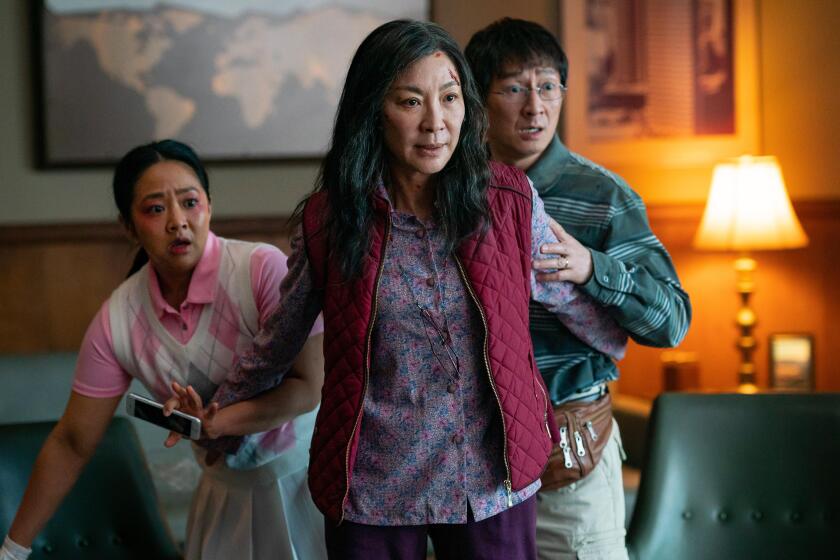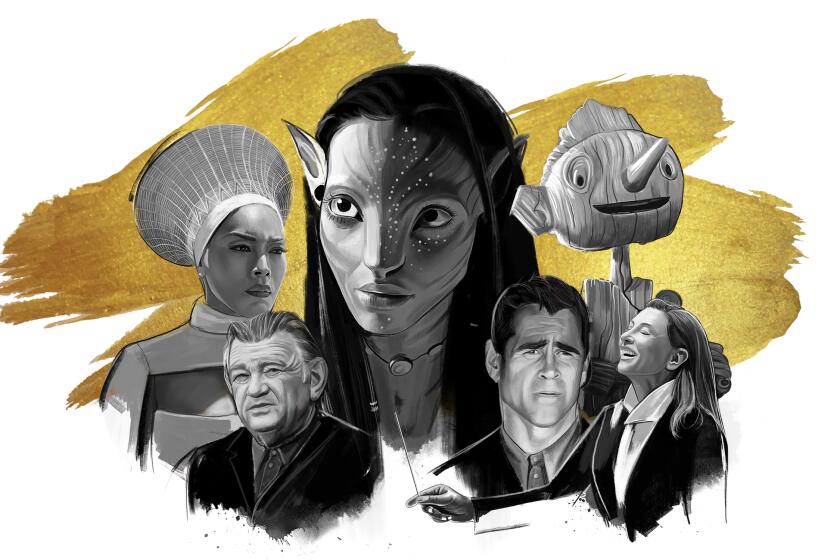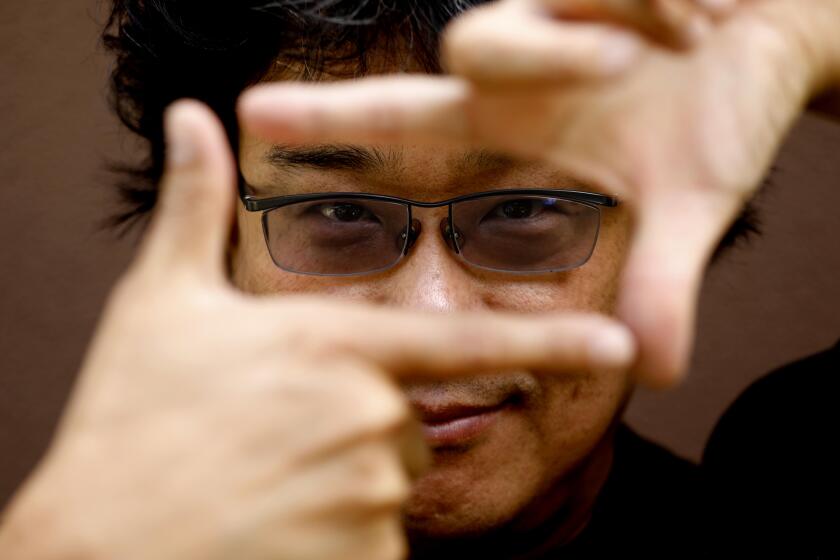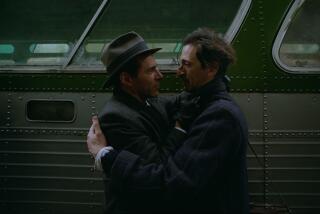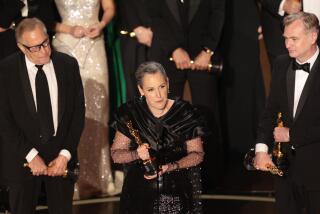How to watch every best picture winner from 2010 through 2019
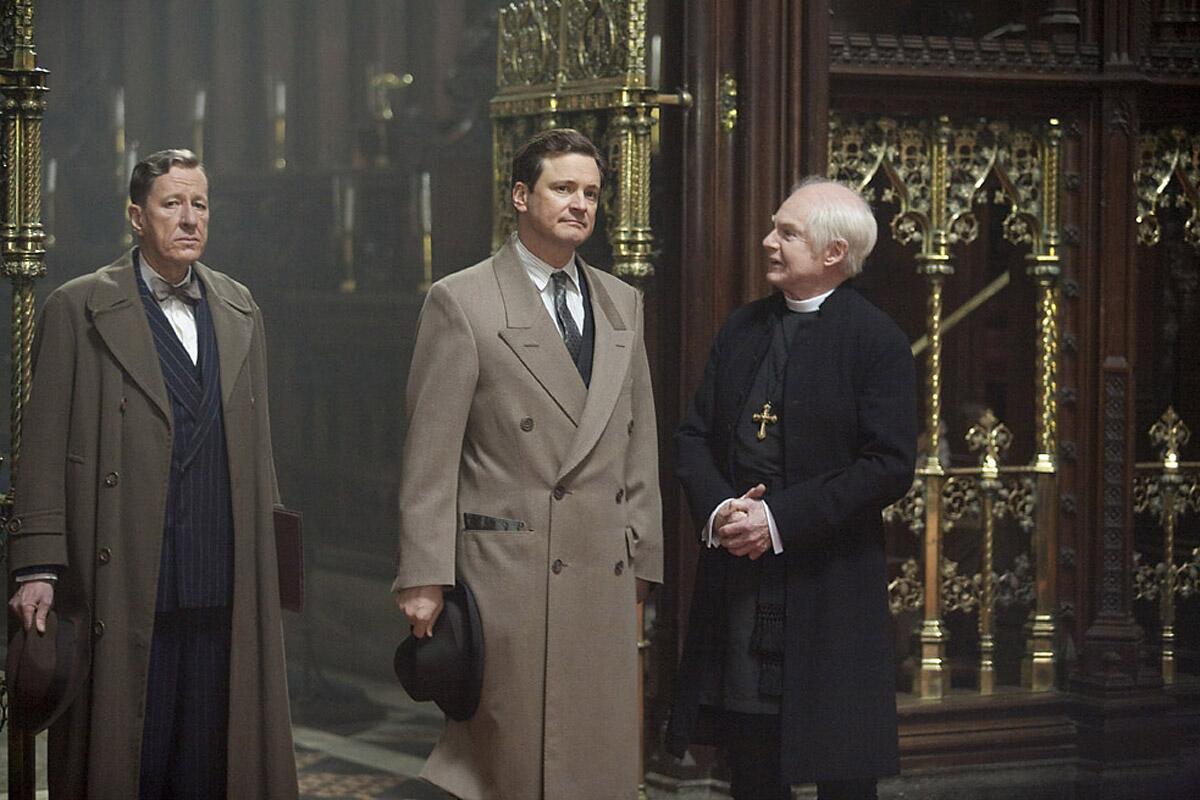
- Share via
With a rousing musical soundtrack, “The Artist” (2011) is not a silent film, but it pays homage to the silent era and was the first best picture winner with no dialogue since “All Quiet on the Western Front” (1930). It’s also one of the few movies since the 1950s — and the only best picture winner — to be released with the classic 1:33 to 1 aspect ratio. (On wide-screen TV there will be letterboxed empty space to the left and right of the square-ish image.) This is the same aspect ratio used since the standardization of sound in film, until the wide-screen formats were introduced in the 1950s.
The nominations for the 2023 Academy Awards are out. Here’s where you can start catching up on the nominees you may have missed.
Other milestones in the 2010s Oscars are the first film not in English to win Best Picture (“Parasite,” 2019) and “The Artist” was the first comedy to win since “Annie Hall” in 1977.
How to watch Oscar Best Picture winners through the decades
Intro and 1920s | 1930s | 1940s | 1950s | 1960s | 1970s | 1980s | 1990s | 2000s | 2010s | 2020s (and 2020 nominees)
2010: ’The King’s Speech’
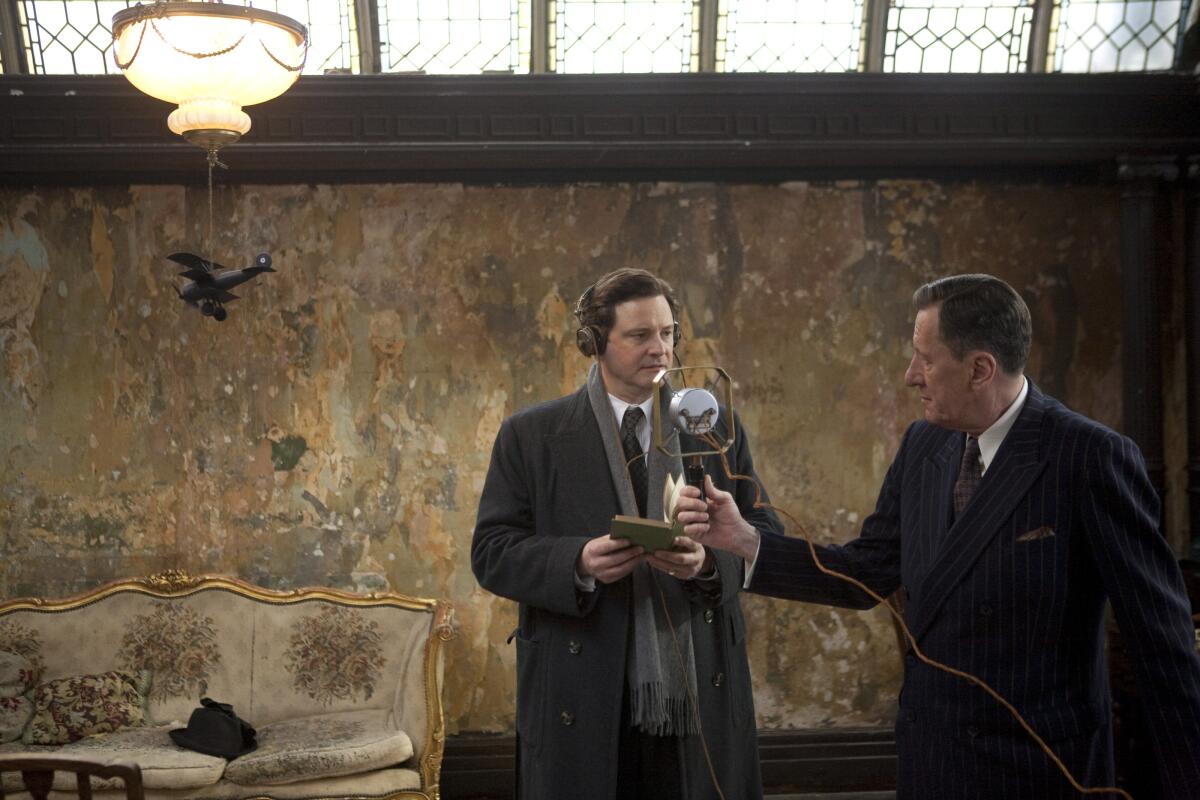
83rd Academy Awards — February 2011
Rating: R, for some language.
Running time: 1 hour, 58 minutes.
Streaming: Amazon Prime: Rent/Buy |Apple TV+: Rent/Buy
It takes two, it always takes two.
Though romantic couples get the attention, some of the most memorable movie pairings, from Marlon Brando and Rod Steiger in “On the Waterfront” to Geena Davis and Susan Sarandon as “Thelma & Louise,” feature same gender actors playing off each other to breathtaking effect. So it is with Colin Firth and Geoffrey Rush in “The King’s Speech.”
Simultaneously commoner and king, teacher and pupil, iconoclast and underdog, the meeting of the unstoppable force that is Rush’s speech therapist and the immovable object that is Firth’s future English king is as good as one-on-one acting gets. Both actors completely inhabit their absorbing roles, relishing the opportunity their exchanges provide and adding unlooked-for layers to a complicated human relationship.
Because this British film has the contours of an Oscar-friendly Hollywood story (not for nothing is the Weinstein Co. involved), “The King’s Speech” tends to sound more standard than it plays. In fact, several factors, aside from that acting, keep it involving and well above the norm. (Read more) — Kenneth Turan
Perspective: How true is ‘The King’s Speech’?
2011: ’The Artist’
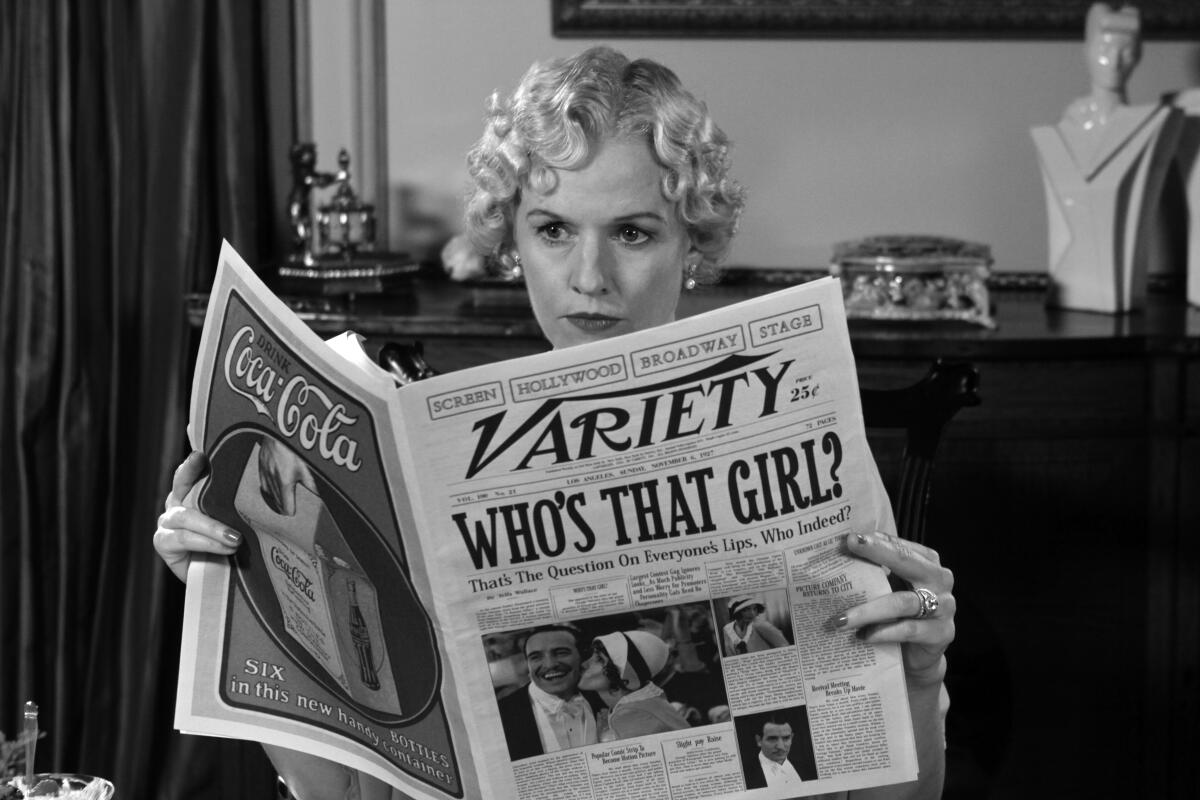
84th Academy Awards — February 2012
Rating: PG-13, for a disturbing image and a crude gesture.
Running time: 1 hour 40 minutes.
Streaming: Amazon Prime: Rent/Buy
“The Artist” is the wonder of the age, as much a miracle as “Avatar,” though it comes at things from the totally opposite direction.
Far from embracing the most modern cinematic techniques, “The Artist” is a glorious throwback, a black-and-white silent movie that manages the impossible: It strikes an exact balance between the traditions of the past and the demands of the present, managing to be true to the look and spirit of bygone times while creating the most modern kind of witty and entertaining fun. Look on this work, ye mighty of Hollywood, and rejoice.
“The Artist” is no cynical pastiche, no glib and mocking reworking of old-fashioned tropes. It combines delightful humor and charm with what movies at their best have always conveyed: the honest power of pure emotion. It is a movie love story and a love note to the movies, all at the same time. (Read more) — Kenneth Turan
The Oscar drums are beating louder for the silent film.
2012: ’Argo’
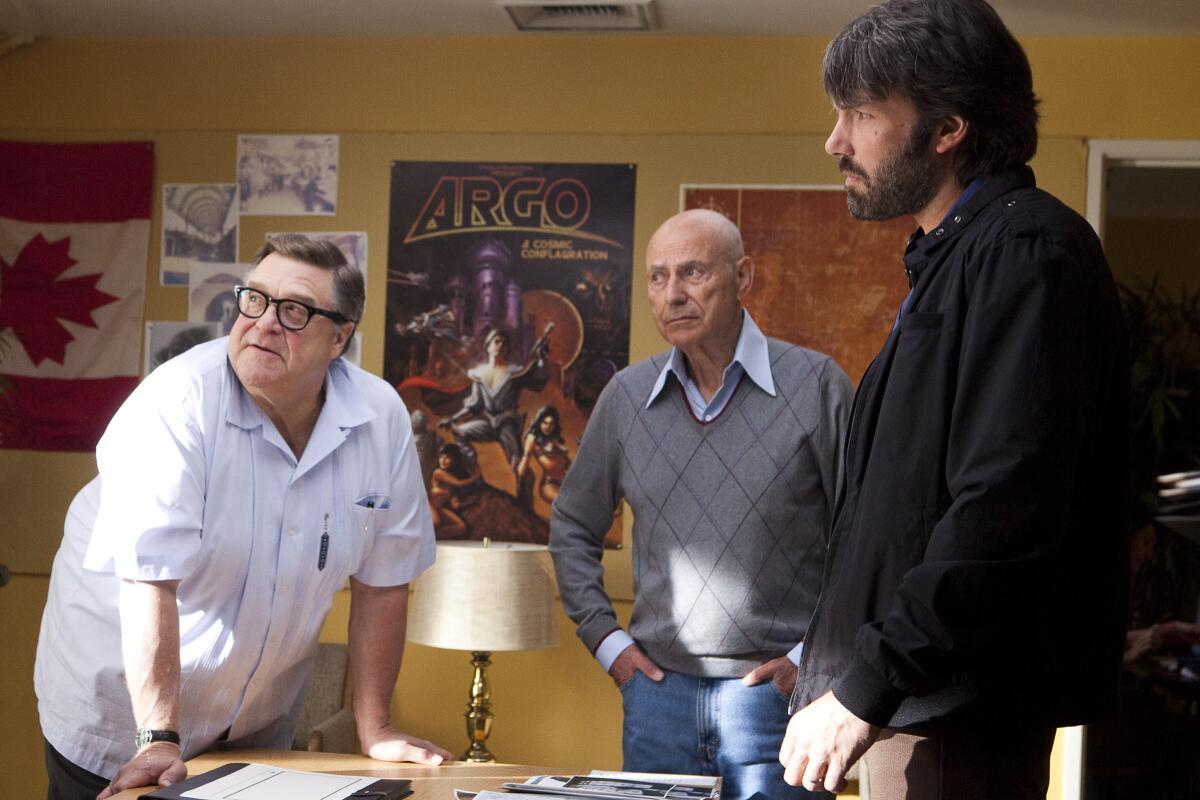
85th Academy Awards — February 2013
Rating: R, for language and some violent images.
Running time: 2 hours.
Streaming: Amazon Prime: Rent/Buy | Apple TV+: Rent/Buy
“Argo” takes you back. Not just to the dark days of the 1979-81 Iranian hostage crisis but to a brighter, earlier time, when Hollywood regularly turned out smart and engaging films that crackled with energy and purpose.
Very much like Clint Eastwood before him, actor turned actor-director Ben Affleck not only has a passion for those kinds of throwback entertainments, he knows that the only way to get them on the screen effectively is to do the work himself.
After a hesitant start with “Gone Baby Gone,” Affleck found his footing with the crackling crime drama “The Town” and now takes things one step further with this breakneck tale of how an ace CIA agent rescued six Americans from the jaws of the Iranian Revolution with a little help from, hard as it may be to believe, the good folks of Hollywood. It’s all based on a true story persuasively conveyed — and amplified — in the best classic movie tradition. (Read more) — Kenneth Turan
Politics of two kinds in ‘Argo’s’ Oscar win over ‘Lincoln’
2013: ’12 Years a Slave’
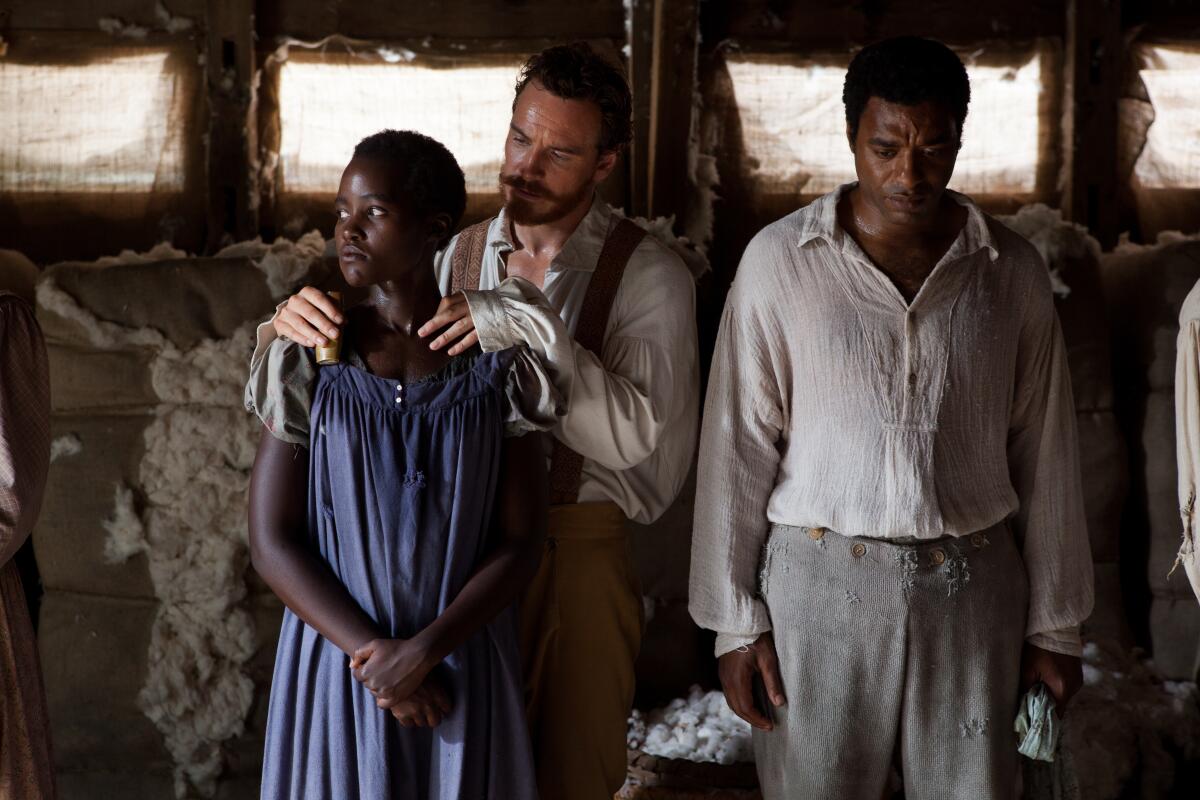
86th Academy Awards — March 2014
Rating: R, for violence/cruelty, some nudity and brief sexuality.
Running time: 2 hours, 14 minutes.
Streaming: HBO Max: Included | Apple TV+: Rent/Buy
When a director who never ever blinks takes on a horrific subject, a nightmare in broad daylight is the inevitable result. Welcome, if that is the right word, to the world of “12 Years a Slave.”
Based on an 1853 memoir detailing the appalling experiences of Solomon Northup, a free man of color who was brazenly abducted and sold into slavery, this film intends to do more than tell us a story. It wants to immerse us in an experience, and it does.
Obviously, no film can re-create the unspeakable degradation of one human being owning another, but in making the attempt “12 Years” insists we feel things in a particularly oppressive way. This is impressive filmmaking, but it is not easy to take in.
British director Steve McQueen, working from a screenplay by John Ridley, has no intention of making audiences the slightest bit comfortable with this terrible story, no interest in putting in any special pleading to bend our hearts. (Read more) — Kenneth Turan
Even in the to-and-fro over the best-picture race between “12 Years A Slave” and “Gravity” -- a din that has uncharacteristically grown louder in the five days since Oscar voting closed -- there’s been almost no talk of another issue.
2014: ’Birdman or (The Unexpected Virtue of Ignorance)’
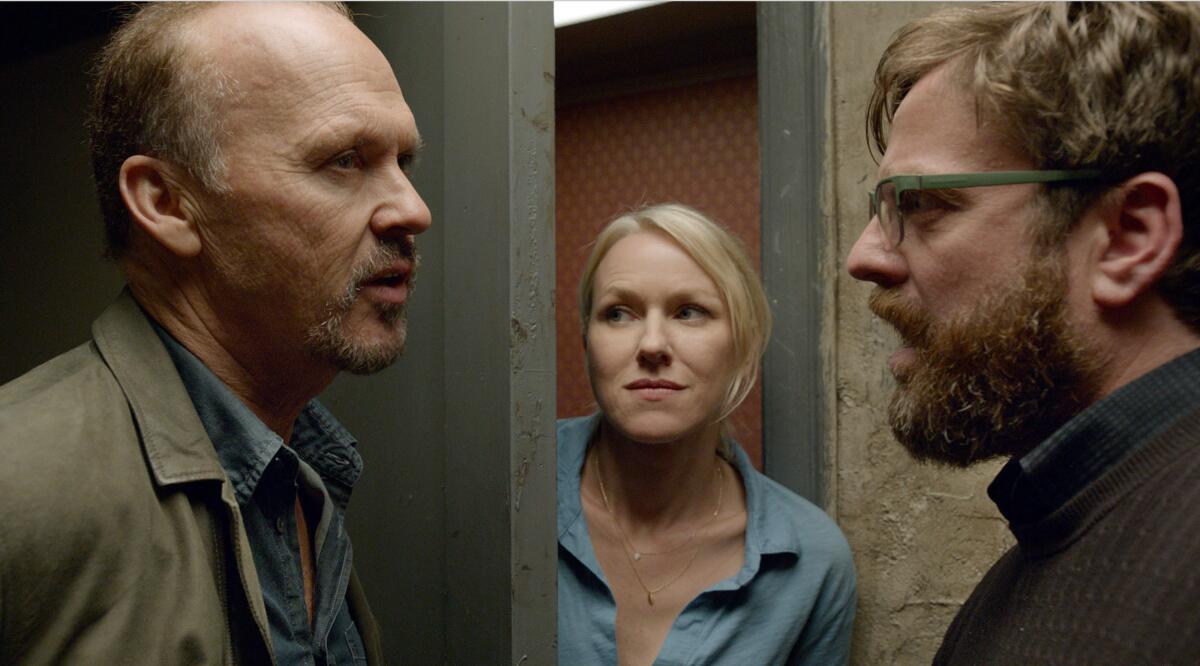
87th Academy Awards — February 2015
Rating: R, for language throughout, some sexual content and brief violence.
Running time: 1 hour, 59 minutes.
Streaming: Amazon Prime: Rent/Buy | Apple TV+: Rent/Buy
In “Birdman or (The Unexpected Virtue of Ignorance),” Michael Keaton is something of a cross between an aging Icarus and the emperor with no clothes — metaphorical until the tighty-whitey Times Square streak.
As a latter-day celluloid superhero come to Broadway’s proving ground for a rebirth, the Burning Man histrionics on stage and off are hysterically on point; makes you laugh, makes you cry. Irony lurks in every shadow.
Fittingly the film begins with a fiery object — A bird? A plane? A meteor? — cutting through cotton-candy clouds above Manhattan where the highly agitated life of the actor Riggan (Keaton) plays out. The city, as it happens, is the perfect spot for filmmaker Alejandro G. Iñárritu to build his pyre. Exactly whose death is being celebrated or mourned — Hollywood? Theater? Society? A single shooting star? — well, that is the question. And oh, the flames that follow. Delicious. (Read more) — Betsy Sharkey
Here are the nominees for the 2023 Academy Awards in all categories, announced live Tuesday from the Samuel Goldwyn Theatre in Beverly Hills.
2015: ’Spotlight’
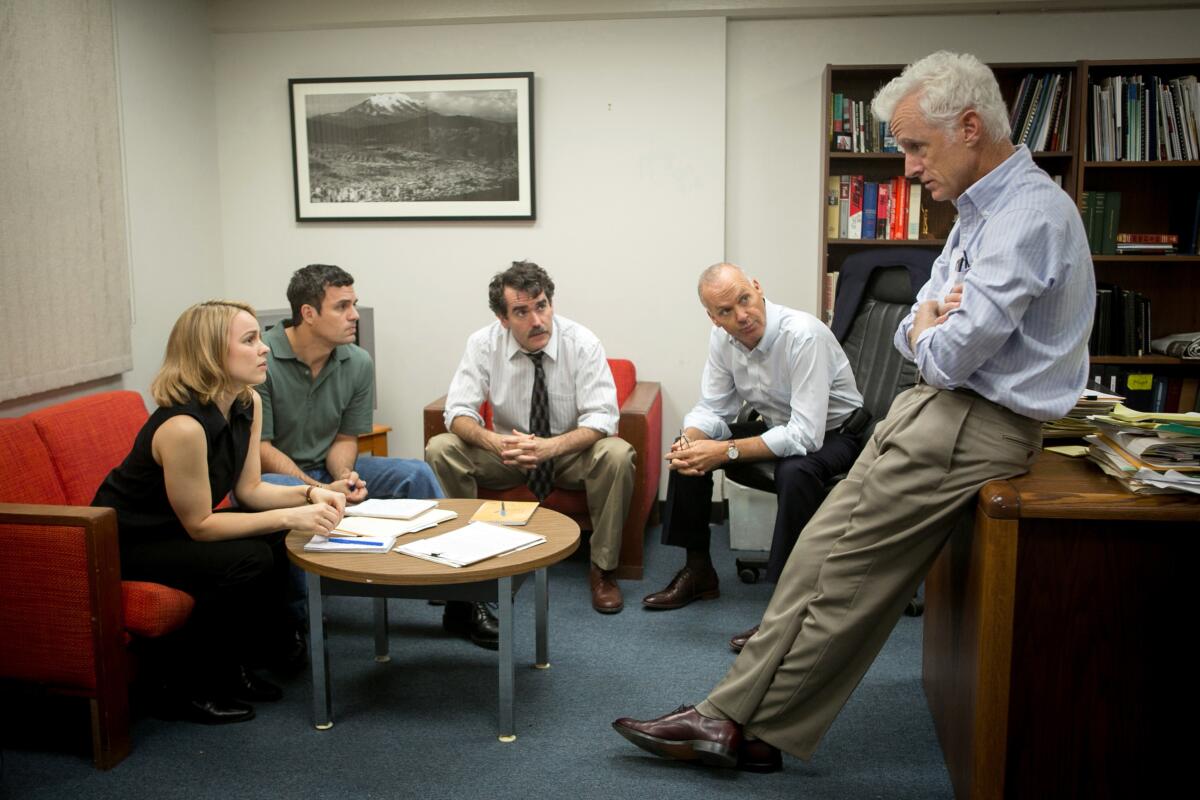
88th Academy Awards — February 2016
Rating: R, for some language including sexual references.
Running time: 2 hours, 8 minutes.
Streaming: Amazon Prime: Rent/Buy | Apple TV+: Rent/Buy
“Spotlight” doesn’t call attention to itself. Its screenplay is self-effacing, its accomplished direction is intentionally low key, and it encourages its fistful of top actors to blend into an eloquent ensemble.
By unfolding in this quiet yet intensely dramatic way, “Spotlight” fosters the satisfying illusion its powerhouse story is telling itself. Which couldn’t be further from the truth.
This is the saga of how the Boston Globe won the 2003 Pulitzer Prize for uncovering not only decades of sexual abuse by Catholic priests but also systematic maneuvers by the church’s Boston archdiocese to shield the more than 70 perpetrators. “Spotlight” is mightily impressive not only because of the importance of the story it tells but also because of how much effort and skill went into bringing it to the screen in the best possible way.
As befits a story about heroic individuals who just happen to be working journalists, the entire “Spotlight” team understood a key tenet of the profession: If you have a good story, over-hyping it will be counterproductive.
That led everyone, from director Tom McCarthy (who also co-wrote with former “West Wing” writer Josh Singer) through stars Mark Ruffalo, Michael Keaton, Rachel McAdams, Liev Schreiber, John Slattery and Stanley Tucci, to make sure their presentation was as realistic and straight ahead as they could make it. (Read more) — Kenneth Turan
It was a year of two films. Until it wasn’t.
2016: ’Moonlight’
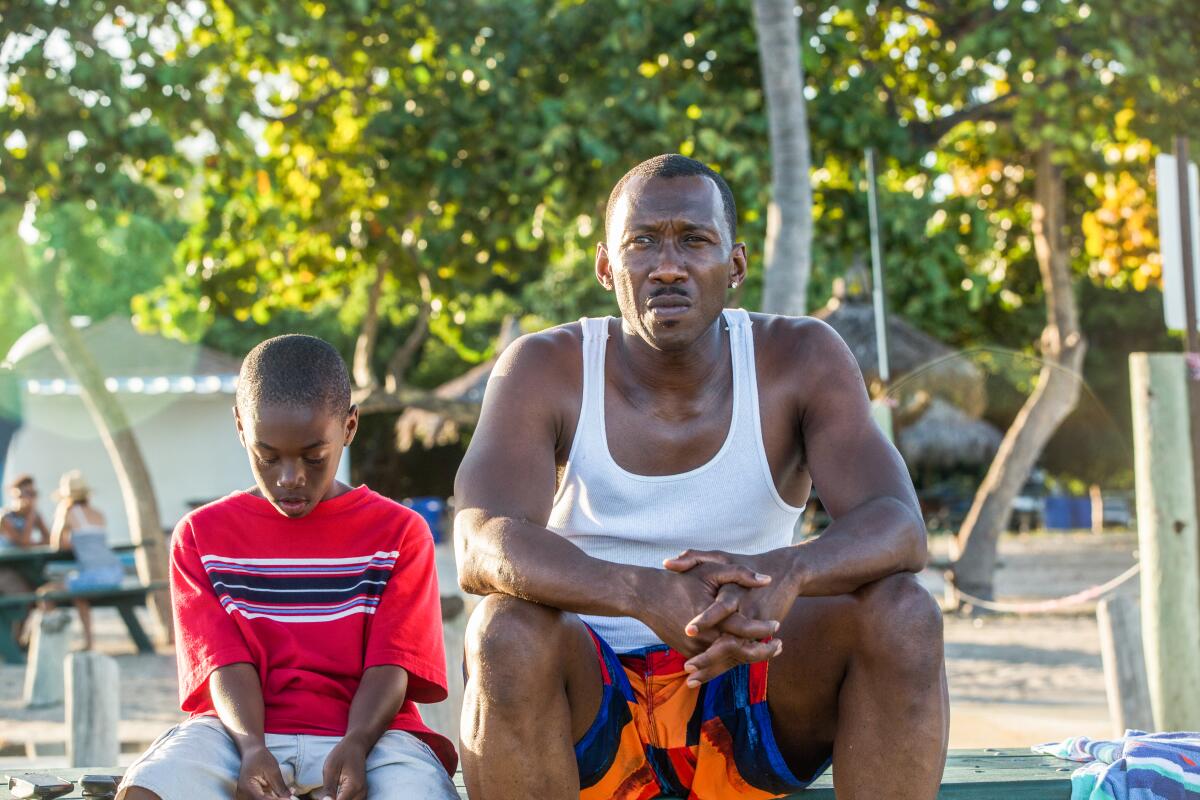
89th Academy Awards — February 2017
Rating: R, for some sexuality, drug use, brief violence and language throughout.
Running time: 1 hour, 51 minutes.
Streaming: Amazon Prime: Rent/Buy | Apple TV+: Rent/Buy | Other Platforms: Kanopy; Showtime
“Moonlight” is magic.
So intimate you feel like you’re trespassing on its characters’ souls, so transcendent it’s made visual and emotional poetry out of intensely painful experience, it’s a film that manages to be both achingly familiar and unlike anything we’ve seen before.
Written and directed by Barry Jenkins and based on an unproduced play by Tarell Alvin McCraney, “Moonlight” creates such an exceptional level of emotional honesty it universalizes a very specific coming of age experience, that of a gay black man growing from child to adult starting in the 1980s crack cocaine epidemic years in the tough Liberty City area of Miami. (Read more) — Kenneth Turan
“Moonlight” won the best picture Oscar after a botched announcement threw the ceremony into chaos.
2017: ’The Shape of Water’
90th Academy Awards — March 2018
Rating: R, for sexual content, graphic nudity, violence and language.
Running time: 2 hours, 3 minutes.
Streaming: Hulu: Included | Amazon Prime: Rent/Buy | Apple TV+: Rent/Buy
“The Shape of Water” is a wonder to behold.
Magical, thrilling and romantic to the core, a sensual and fantastical fairy tale with moral overtones, it’s a film that plays by all the rules and none of them, going its own way with fierce abandon.
More than that, “Shape of Water” is both grounded in the fertile soil of genre filmmaking and elevated to unexpected heights by the transcendent imagination of director and co-writer Guillermo del Toro.
Del Toro works well in many genres, from horror to science fiction to gothic melodrama, but as 2006’s brilliant “Pan’s Labyrinth” made clear, his facility as modern cinema’s most accomplished fantasy filmmaker trumps everything else.
“Shape of Water” is more than that film’s equal, it echoes its legendary predecessor, Jean Cocteau’s “Beauty and the Beast,” in its ability to simultaneously call forth a spectacular imaginary world and make it heartbreakingly believable. (Read more) —Kenneth Turan
How did “The Shape of Water,” a movie about a mute cleaning woman falling truly, madly, deeply in love with a fish-man, wind up winning the Oscar for best picture?
2018: ’Green Book’
91st Academy Awards — February 2019
Rating: PG-13, for thematic content, language including racial epithets, smoking, and some violence and suggestive material.
Running time: 2 hours, 10 minutes.
Streaming: Amazon Prime: Rent/Buy | Apple TV+: Rent/Buy
Consider this a warning. You may be tempted to push back against “Green Book,” may be itching to proclaim it too pat, too obvious, too much of a setup job, but resistance, as they say, is futile. It’s deeply embedded in this film’s DNA to make us feel good, and, really, what could be wrong with that?
Co-written and directed by Peter Farrelly, of all people, and “inspired by a true friendship,” “Green Book” is a savvy and super effective piece of popular entertainment.
The film is a bit like “The Odd Couple” joined to a 21st century version of “Driving Miss Daisy,” with superior acting by two of today’s top actors — Viggo Mortensen and Mahershala Ali — sealing the bargain.
Mortensen’s character, Italian American driver Frank Anthony Vallelonga, known to all as Tony Lip, is full of self-satisfied swagger, while Ali’s Jamaican passenger, Dr. Don Shirley, is a man of dignity, even hauteur. (Read more) — Kenneth Turan
2019: ’Parasite’

92nd Academy Awards — February 2020
Rating: R, for language, some violence and sexual content.
Running time: 2 hours, 11 minutes.
Streaming: Hulu: Included | Apple TV+: Rent/Buy | Other Platforms: Kanopy
(In Korean with English subtitles)
The first thing you see in Bong Joon Ho’s “Parasite,” a thriller of extraordinary cunning and emotional force, is an upper window in a tiny underground apartment. From this high, narrow vantage the Kims, a resilient family of four, peer onto a grubby Seoul street strewn with garbage bags and electrical wires — an ugly view made worse by a drunk who often turns up to relieve himself right outside. Sometime later the Kims will stand before a much larger window, as big and beautiful as a cinema screen, in an enormous house with a gorgeous sunlit garden. It’s not just a different view; it’s a different world.
Bong Joon Ho inspired a beer, Bong Joon-hops. That’s better than any award, but his movie, “Parasite,” deserves plenty of honors this season.
From the outset of this deviously entertaining movie, which recently became the first South Korean film to win the prestigious Palme d’Or at Cannes, every detail of the Kims’ hardscrabble existence is on blunt display. In an early scene, high school graduate Ki-woo (Choi Woo Shik) and his sister, Ki-jung (Park So Dam), scurry around their cramped bathroom with their phones held aloft, hunting for a free WiFi signal. You register the clutter of their apartment with its discarded clothes, mildewed tiles and skittering stinkbugs. You watch the Kims fold and assemble pizza boxes for a nearby restaurant, the closest any of them has recently come to landing a job. (Read more) — Justin Chang
How to watch Oscar Best Picture winners through the decades
Intro and 1920s | 1930s | 1940s | 1950s | 1960s | 1970s | 1980s | 1990s | 2000s | 2010s | 2020s (and 2020 nominees)
More to Read
Only good movies
Get the Indie Focus newsletter, Mark Olsen's weekly guide to the world of cinema.
You may occasionally receive promotional content from the Los Angeles Times.
